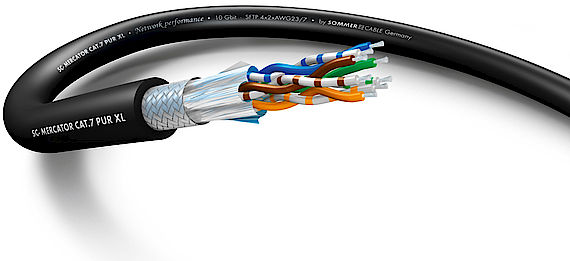Class F channel and Category 7 cable are backward compatible with Class D / Category 5e and Class E/Category 6. Class F features even stricter specifications for crosstalk and system noise than Class E. To achieve this, shielding has been added for individual wire pairs and the cable as a whole. Besides the shield, the twisting of the pairs and number of turns per unit length increases RF shielding and protects from crosstalk.
The Category 7 cable standard has been created to allow 10 Gigabit Ethernet over 100 m of copper cabling (also, 10 Gbit/s Ethernet now is typically run on Cat 6A). The cable contains four twisted copper wire pairs, just like the earlier standards. Category 7 cable can be terminated either with 8P8C compatible GG45 electrical connectors which incorporate the 8P8C standard or with TERA connectors. When combined with GG45 or TERA connectors, Category 7 cable is rated for transmission frequencies of up to 600 MHz.
As of November 2010, all manufacturers of active equipment have chosen to support the 8P8C for their 10 Gigabit Ethernet products on copper and not the GG45, ARJ45, or TERA in order to function on Cat 6A.
Category 7 is not recognized by the TIA/EIA.
Category 7A
Class FA (Class F Augmented) channels and Category 7A cables, introduced by ISO 11801 Edition 2 Amendment 2 (2010), are defined at frequencies up to 1000 MHz, suitable for multiple applications including CATV (862 MHz). Each pair offers 1200 MHz of bandwidth.
Simulation results have shown that 40 Gigabit Ethernet may be possible at 50 meters (164 ft) and 100 Gigabit Ethernet at 15 meters (49 ft). In 2007, researchers at Pennsylvania State University predicted that either 32 nm or 22 nm circuits would allow for 100 Gigabit Ethernet at 100 meters(328 ft).
Category 7A is not recognized in TIA/EIA-568.

